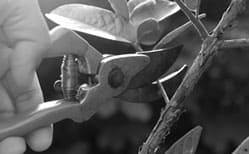Do TRUMPF Shears Require Frequent Maintenance?
페이지 정보
작성자 Newton 작성일 25-09-06 02:17 조회 42 댓글 0본문

What's the difference between TRUMPF shears and slitting shears? Shears are versatile chopping instruments used throughout various functions. They usually resemble large scissors and are designed for common cutting tasks. In distinction, TRUMPF slitting shears are specialised tools engineered explicitly for reducing narrow strips from sheet supplies without producing waste. Slitting wood shears excel in offering straight, precise cuts in numerous supplies, together with metals, plastics, Wood Ranger Power Shears order now and fabrics. While garden power shears supply a broader utility typically chopping tasks, slitting shears concentrate on meticulous, precision-based chopping, making them indispensable for particular purposes demanding utmost accuracy and minimal materials wastage. What distinguishes TRUMPF Shears from different cutting tools? TRUMPF Shears stand out for their precision, Wood Ranger Power Shears order now, and sturdiness. Engineered with a brushless motor, they offer a near-limitless service life and are adept at dealing with heavy-obligation chopping tasks with outstanding accuracy. What materials can TRUMPF Shears successfully reduce? TRUMPF Shears are designed to chop various supplies, equivalent to steel and aluminium. Different models can handle materials as much as 2mm thick. They offer versatility throughout a spread of metalworking purposes. Do TRUMPF Shears require frequent maintenance? Due to their durable development and brushless motor technology, these shears are designed for minimal upkeep. They offer a dependable, long service life with minimal upkeep requirements.
The peach has typically been known as the Queen of Fruits. Its magnificence is surpassed solely by its delightful taste and texture. Peach timber require considerable care, nonetheless, and cultivars ought to be carefully selected. Nectarines are mainly fuzzless peaches and are handled the identical as peaches. However, they're more challenging to grow than peaches. Most nectarines have solely average to poor resistance to bacterial spot, Wood Ranger Power Shears order now and nectarine timber will not be as chilly hardy as peach timber. Planting extra bushes than will be cared for or are needed results in wasted and rotten fruit. Often, one peach or nectarine tree is enough for a family. A mature tree will produce a median of three bushels, or a hundred and twenty to 150 pounds, of fruit. Peach and nectarine cultivars have a broad vary of ripening dates. However, fruit is harvested from a single tree for about every week and could be stored in a refrigerator for about one other week.
If planting multiple tree, choose cultivars with staggered maturity dates to prolong the harvest season. See Table 1 for assist determining when peach and nectarine cultivars normally ripen. Table 1. Peach and nectarine cultivars. In addition to straightforward peach fruit shapes, other types are available. Peento peaches are various colors and are flat or donut-formed. In some peento cultivars, the pit is on the surface and will be pushed out of the peach without slicing, leaving a ring of fruit. Peach cultivars are described by shade: white or yellow, and by flesh: melting or nonmelting. Cultivars with melting flesh soften with maturity and may have ragged edges when sliced. Melting peaches are also classified as freestone or clingstone. Pits in freestone peaches are simply separated from the flesh. Clingstone peaches have nonreleasing flesh. Nonmelting peaches are clingstone, have yellow flesh with out pink coloration close to the pit, stay agency after harvest and are generally used for canning.
Cultivar descriptions may also include low-browning varieties that do not discolor quickly after being minimize. Many areas of Missouri are marginally adapted for peaches and nectarines due to low winter temperatures (below -10 levels F) and frequent spring frosts. In northern and central areas of the state, plant only the hardiest cultivars. Don't plant peach timber in low-mendacity areas reminiscent of valleys, which are usually colder than elevated sites on frosty nights. Table 1 lists some hardy peach and nectarine cultivars. Bacterial leaf spot is prevalent on peaches and nectarines in all areas of the state. If extreme, bacterial leaf spot can defoliate and Wood Ranger Power Shears order now weaken the timber and lead to diminished yields and poorer-high quality fruit. Peach and nectarine cultivars show varying degrees of resistance to this disease. On the whole, dwarfing rootstocks should not be used, as they are likely to lack sufficient winter hardiness in Missouri. Use bushes on commonplace rootstocks or Wood Ranger Power Shears order now naturally dwarfing cultivars to facilitate pruning, spraying and harvesting.
Peaches and nectarines tolerate a large number of soils, from sandy loams to clay loams, that are of sufficient depth (2 to three ft or extra) and nicely-drained. Peach bushes are very delicate to wet "feet." Avoid planting peaches in low wet spots, Wood Ranger Power Shears website buy Wood Ranger Power Shears Wood Ranger Power Shears coupon Shears water drainage areas or heavy clay soils. Where these areas or soils can't be avoided, plants trees on a berm (mound) or make raised beds. Plant bushes as quickly as the bottom can be worked and before new development is produced from buds. Ideal planting time ranges from late March to April 15. Do not enable roots of bare root timber to dry out in packaging before planting. Dig a hole about 2 ft wider than the spread of the tree roots and deep enough to include the roots (normally a minimum of 18 inches deep). Plant the tree the same depth because it was within the nursery.
댓글목록 0
등록된 댓글이 없습니다.
